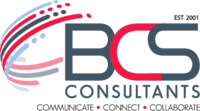Digital signage uses a display like a television screen or a computer monitor to help display your message. Unlike traditional static signage, a digital sign can be static or a motion-picture based on your preference. It can also be changed whenever you want. You can find digital signage everywhere, including hospitals, restaurants, malls, educational buildings, and lobbies.
If you wish to get a message out to your customers, digital signage hardware installation can give you an ideal communication tool to increase brand awareness. They are more attractive than traditional static signage like a banner, poster, or flyer and can catch people's attention much better. Digital signage also allows you to showcase a powerful call-to-action and engaging visuals. Your messages will get noticed more with the help of a digital sign.
The initial process of buying the right equipment and installing a digital sign can be challenging. Today's article will give you some tips on how to set up and install your digital signage.
Buy an HD Screen
The primary backbone of your digital signage is the display itself. Without a high-quality screen that provides a crystal clear picture, your sign will not give you the results you want. Hence, get a good quality screen and not an old television laying around your office or store.
The best choice you have today is going for commercial-grade LCD screens. They generally feature heat dissipation plates and high-quality cooling fans, which help them withstand long hours of runtime. Moreover, these screens also include economic power consumption to help you keep your energy cost in control.
When deciding on the correct screen size, you should consider the total distance between the viewer and your signage, the content format, and the elements you plan to showcase on display. When it comes to digital signage hardware installation, we always recommend a screen size between 42 and 70 inches. Remember, screen size is always measured from corner to corner, not from one side to the other.
Media Software/Player
After finding the perfect screen for your signage, you must select the ideal software to transfer your desired content to the display screen. You will need the following:
- A device or media player that shows your content on the display screen
- Software that enables you to create the content (generally known as CMS or a content management system)
You can even find these elements combined into a single resource which acts both as the software and a media player.
High-Speed Internet Connection
Irrespective of the software and media player you select, you will need a hardwired, high-speed internet connection to enable the former to pull their content from cloud storage. To minimize the possibility of any lag, picture pixelation, and buffering, we suggest you use a good and stable internet source.
Locating Power Connections
You will need to have a power source for your display. Ensure that these lines, like your internet lines, are not exposed. If you need an area with access to the internet and powerlines, we suggest you prep the space before starting your digital signage hardware installation.
Contact BCS for Help Today!
If you are about to set up your digital sign, keep all these points in mind. If you are too busy to do all this yourself, consider getting our professional help. Please speak with our experts to ensure you have the right software, equipment, and technology to install commercial digital signage.

